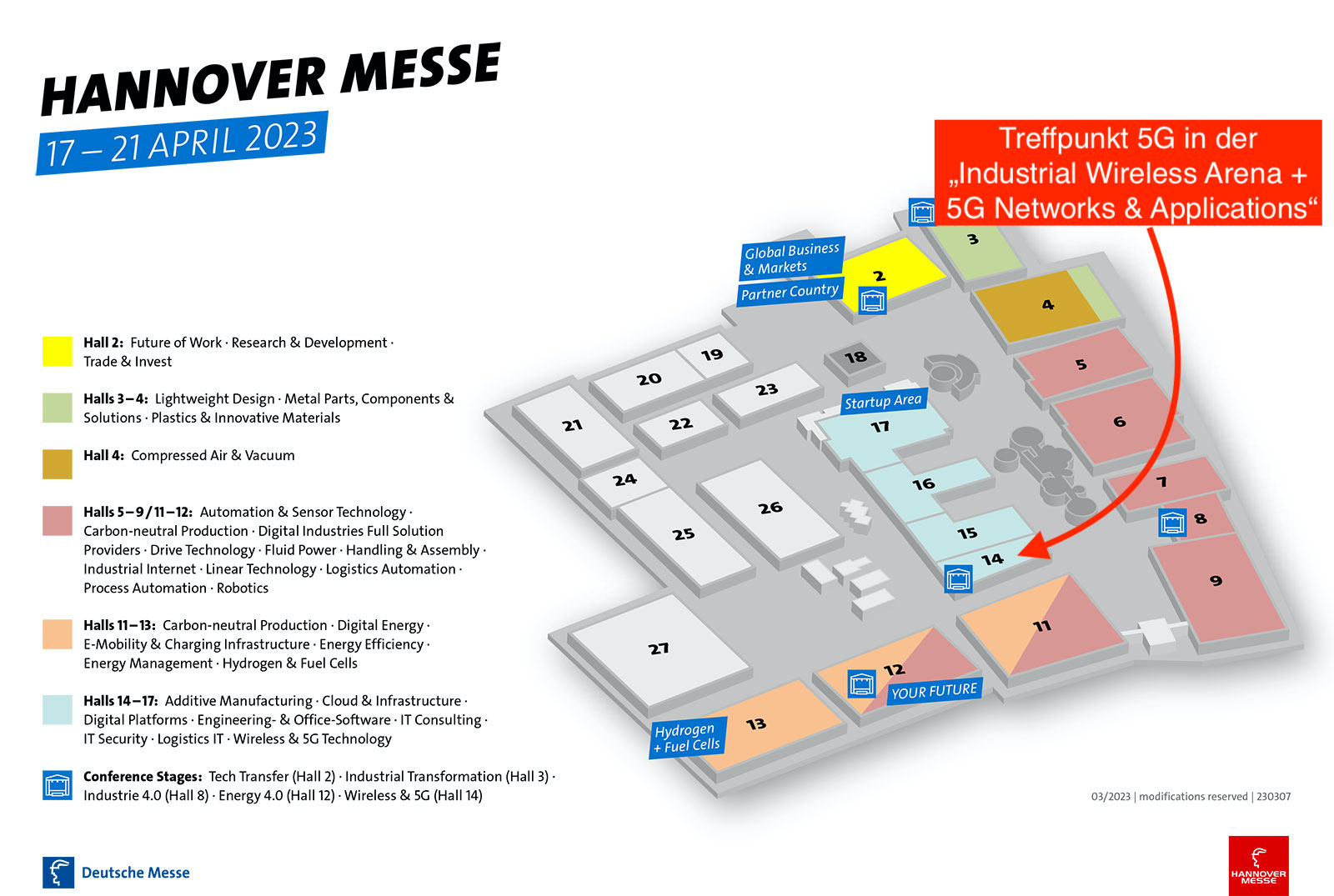Beamforming must also be adequately considered in immission determination. (Picture: Pixabay)
Mobile network operators and system technology manufacturers are meeting the growing demand for higher data transmission rates and data volumes by expanding the networks with increasingly sophisticated technologies. With the standardization of the latest mobile communications generation 5G, a new level has been reached in terms of the performance and flexibility of mobile networks. But what about protection from radiation? Scientists at the Institute for High Frequency Technology in Aachen have taken up the issue.
Authors: Thomas Kopacz, Sascha Schießl, Anna-Malin Schiffarth, Dirk Heberling, IHF – Institute for High Frequency Technology, Aachen, Germany
The overall package simply sounds too tempting: Higher data transmission capacities through more frequency resources, i.e., higher bandwidths and new frequency ranges, as well as low latencies through optimized network architecture are the reason why many experts are talking about the technical quantum leap with 5G. It is not without reason that the 5G expansion is also being demanded by politicians with regard to Germany as an industrial location by imposing ambitious coverage requirements on network operators.
The 3GPP (3rd Generation Partnership Project), the body responsible for standardization in mobile communications, has specified three typical use cases. First of all, these are applications such as massive machine type communications (mMTC) and ultra-reliable and low latency communications (URLLC), which cover the Internet of Things (IoT), Industry 4.0, and autonomous driving. For conventional users, on the other hand, “enhanced Mobile Broadband” (eMBB) is particularly relevant. With eMBB, the focus is on providing the highest data rates right to the edge of the mobile cell. In order to use the valuable frequency resources of the mobile communications cell more efficiently, 5G can also use beamforming, i.e., the special alignment of the transmitted radiation.
Radiation is adapted to user
This enables the base station antennas to radiate signals specifically in certain directions of the cell where active users are located. In addition, the radiation can be dynamically adapted to changing transmission conditions, e.g., a moving user. From a coverage perspective, this has the advantage that the same frequency resources can be simultaneously reused elsewhere in the cell.
But this approach is also of interest from an immission control perspective. In the previous mobile communications generations 2G, 3G and 4G, base station antennas with a static radiation pattern are used, so that data required at one point in the cell is broadcast to the entire cell. With the possible use of beamforming antennas in 5G, the required data can now be radiated to specific cell areas in a targeted manner. However, this new approach also poses new challenges for immission measurement technology, since the measured immission essentially depends on whether the measurement point is located in a supplied cell area at measurement time.
Beamforming antennas bundle signals
Beamforming antennas – the technology behind this is also called Massive MIMO – are antenna groups that consist of a large number of horizontally and vertically arranged individual antennas. This results in a strong bundling of the radiation behavior of the antennas. The following applies: The more individual antennas are used, the stronger the bundling in the desired radiation direction and the lower the undesired spurious emissions in the other directions.

Massive MIMO antenna arrays can adjust their radiation pattern.
The antenna gain serves as a measure of the bundling. The radiation of Massive MIMO antennas does not, as is often suggested, correspond to a thin beam with which point coverage can be realized at the location of an active user. Rather, the antennas have a certain beam angle with regard to their main radiation direction. The radiation can best be visualized by a cone. The intersection of the cone with the ground gives the area covered, which is larger the further the target point is from the antenna.
Radiation reduces
These radiated cones are called “beams” in the following. Due to the dependence of the antenna size on the frequency or wavelength, Massive MIMO antennas can only be used sensibly at higher frequencies or shorter wavelengths from a technical point of view. The actual panning or tracking of the beam is accomplished by cleverly feeding the individual antennas with the same signal, but slightly offset in time. The resulting difference in propagation time of the individual radiated signals of each antenna element leads to a superposition of the radiated power in the direction in which a beam is to be aligned and to a significant reduction of the radiated power in the other directions. It is possible to change the beam’s radiation direction in both horizontal and vertical directions.
Currently, 5G is being operated in Germany in the frequency bands around 2 GHz, which was previously used for UMTS (3G), and in the frequency range between 3.4 GHz and 3.7 GHz. Massive MIMO is only used in the upper of the two frequency bands mentioned because of the shorter wavelengths.
Observance of immission protection during 5G rollout
Once a base station has been put into operation, the limit values of the 26th Ordinance on the Implementation of the Federal Immission Control Act (26. BImSchV) must be complied with for immission protection of the general population in all areas accessible to persons. In this context, the generated immissions averaged over any period of six minutes at the highest operational plant utilization must not exceed the limit values. The maximum immission generated in this state represents the worst case from the immission control point of view. For the previous mobile communications generations 2G, 3G and 4G, this case occurs when all available resources are radiated at maximum transmission power.
The introduction of Massive MIMO antennas in 5G additionally adds the swiveling capability of the beams. In normal operation, the available resources of the base station are shared among the active 5G terminals located in the mobile cell. The maximum immission at a location is only achieved if all the available resources of the base station are radiated at maximum transmit power in the form of just one beam and this beam acts on this location for a duration of at least six minutes.
While this operating condition is highly unlikely in practice, as it requires a single 5G terminal to perform a download at data rates of up to a few Gbit/s for six minutes and no other 5G terminal is active in the cell during this time. Nevertheless, this case is theoretically possible and must be taken into account in terms of the 26th BImSchV for safe operation of the base station. This is done by determining safety distances around the base station antenna, outside of which compliance with the immission protection limits is ensured.
Metrological verification of limit value compliance
During regular operation of the mobile communications networks, there are numerous measurement activities by the federal, state and local governments as well as by measurement institutions that verify compliance with the limit values at specific measurement points by means of measurement technology. The condition of highest operational system utilization is decisive for this. In practice, however, this state cannot be generated without further ado, since there are usually other active terminal devices in the mobile communications cell that take up some of the available resources. For this reason, the following procedure is followed to determine the maximum immission in mobile communications, regardless of whether 2G, 3G, 4G or 5G is involved:
- First, the immission of a signaling signal emitted at constant power is measured. These signals are used, among other things, to enable terminals to recognize the mobile cell as such and to start the process of logging in. In 5G, the SS/PBCH block (Synchronization Signal and Physical Broadcast Channel Block), or SSB for short, is suitable for this purpose, since it is emitted periodically and with constant transmission power regardless of the current traffic load in the cell.
- Based on the immission of the signaling signal, an extrapolation to maximum immission is performed.
With 5G, the SSB is transmitted only at certain times and then occupies only part of the available frequency resources. Much of the time, however, the SSB frequency resources may be occupied by traffic. At the highest operational system utilization, all frequency resources are occupied by traffic. The extrapolation takes into account, among other things, this different occupancy of the frequency spectrum.
In the second part of the article, you can read how immission measurements are carried out and what complexity is added by beamforming.








Leave A Comment